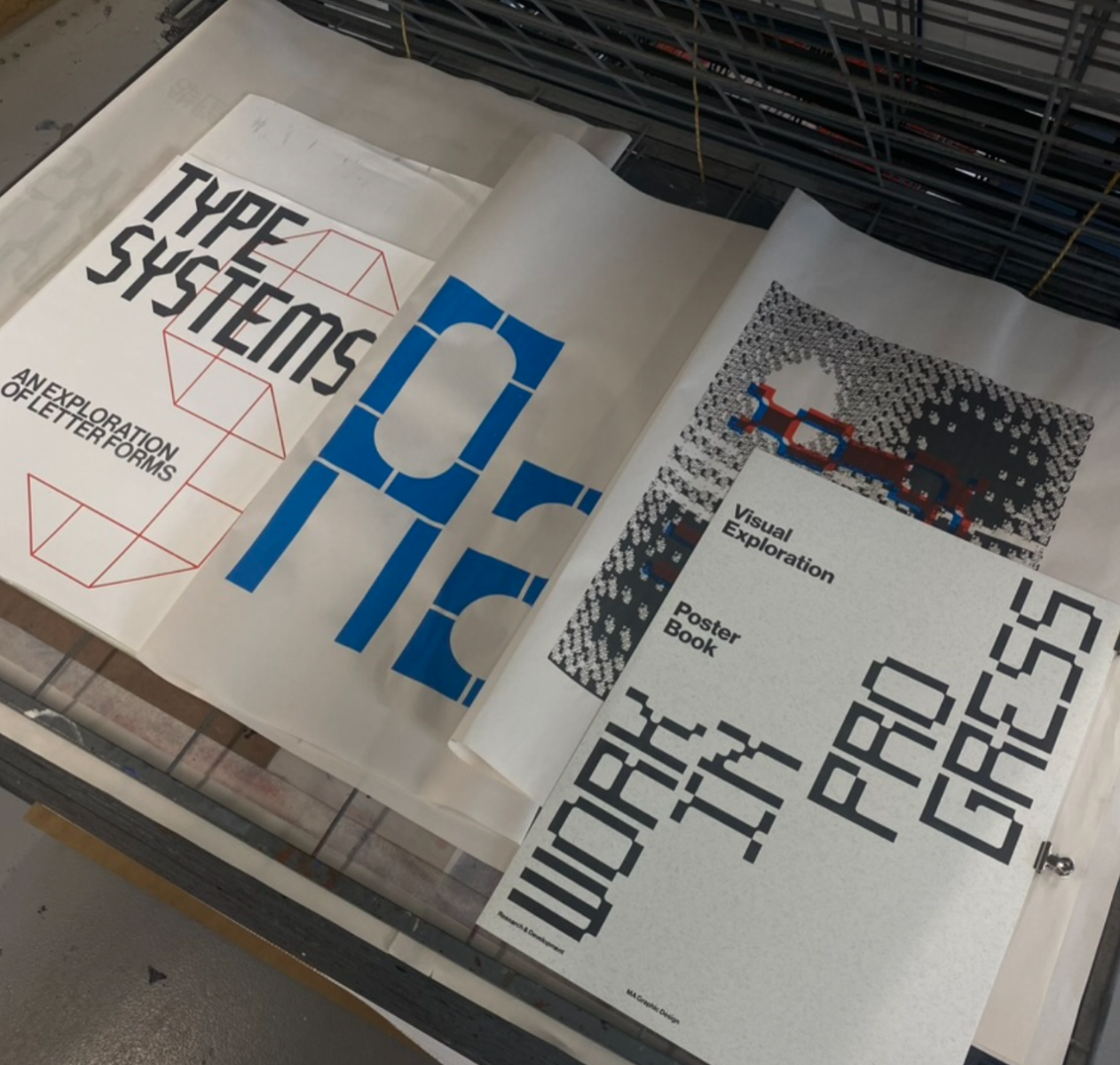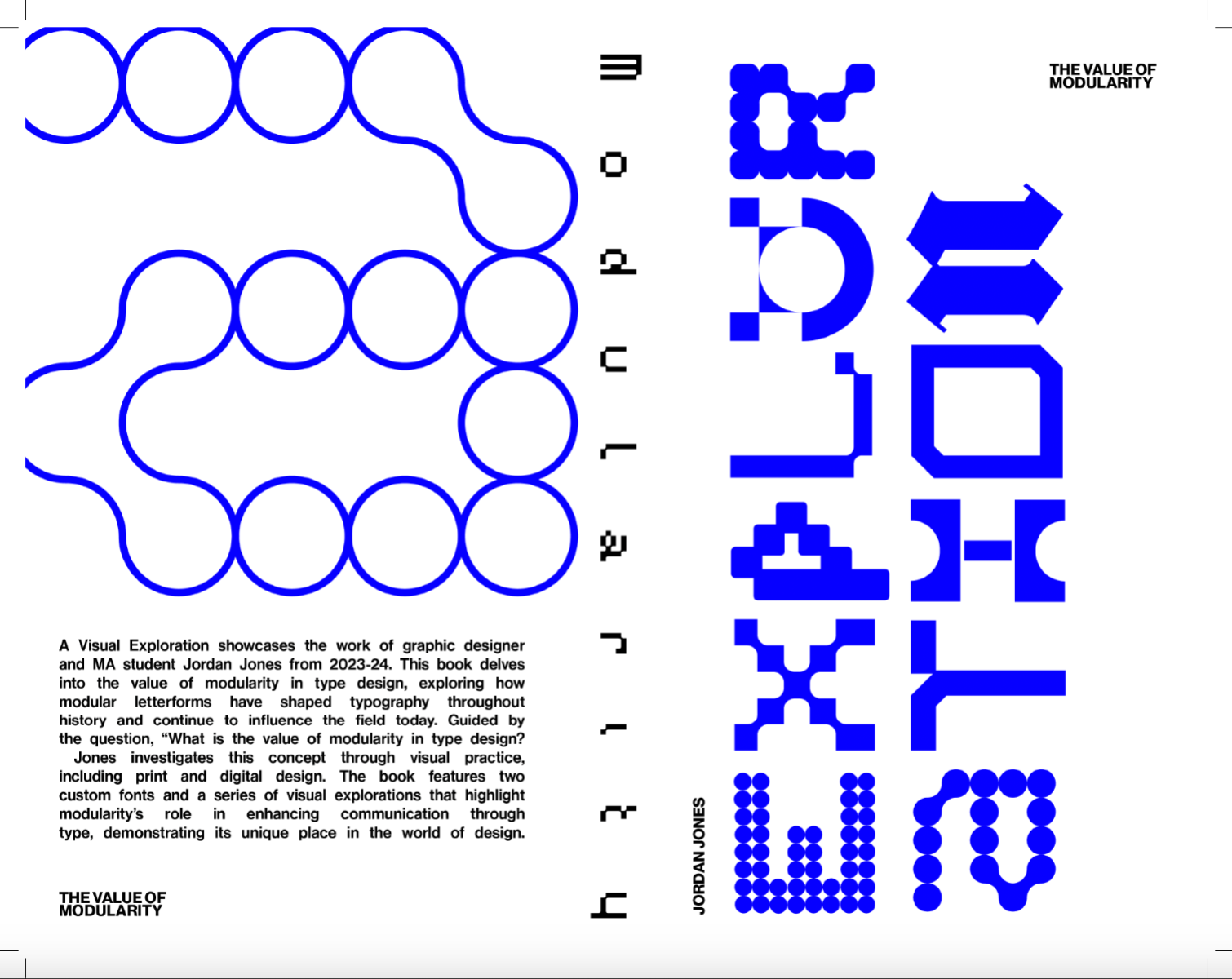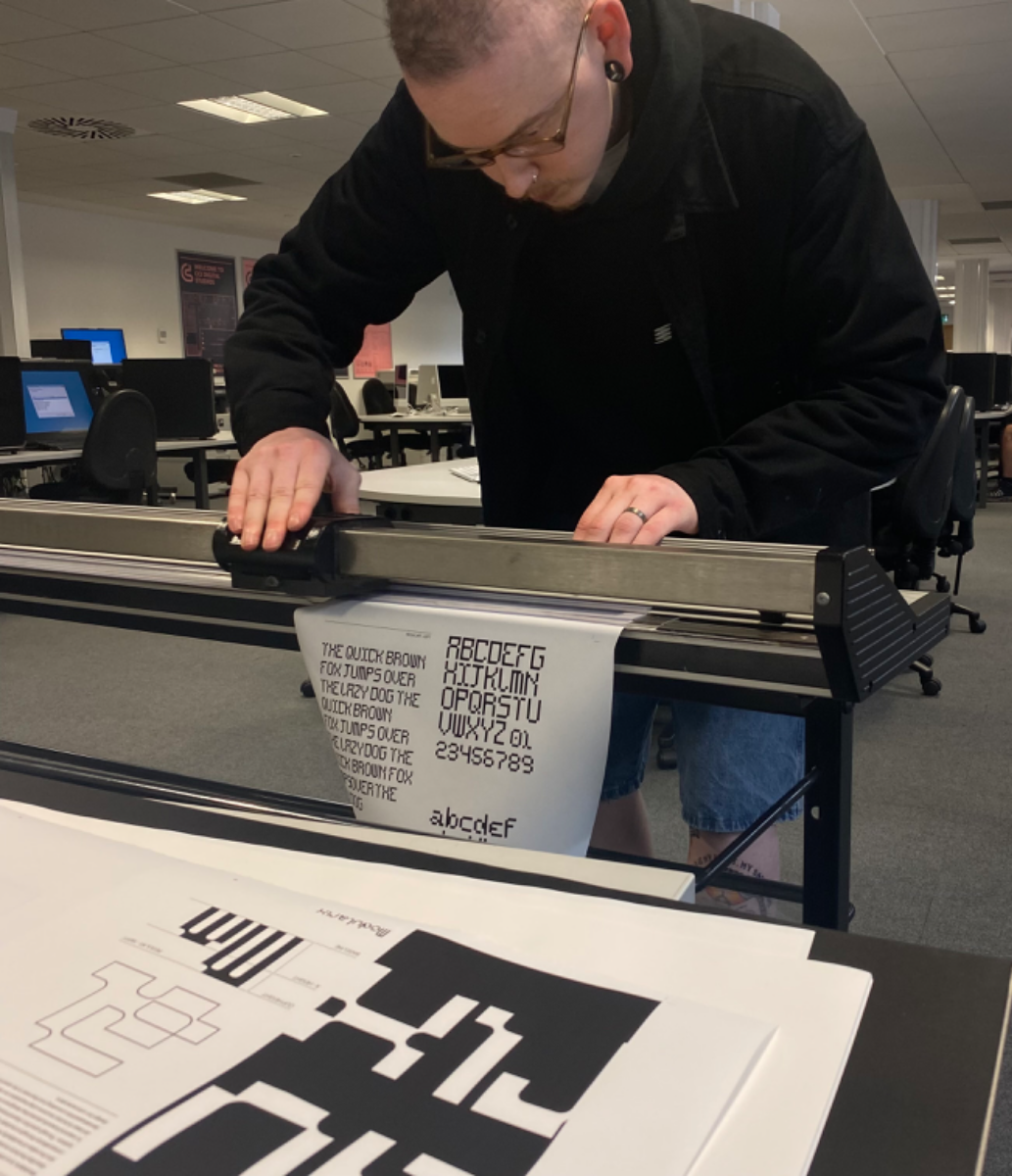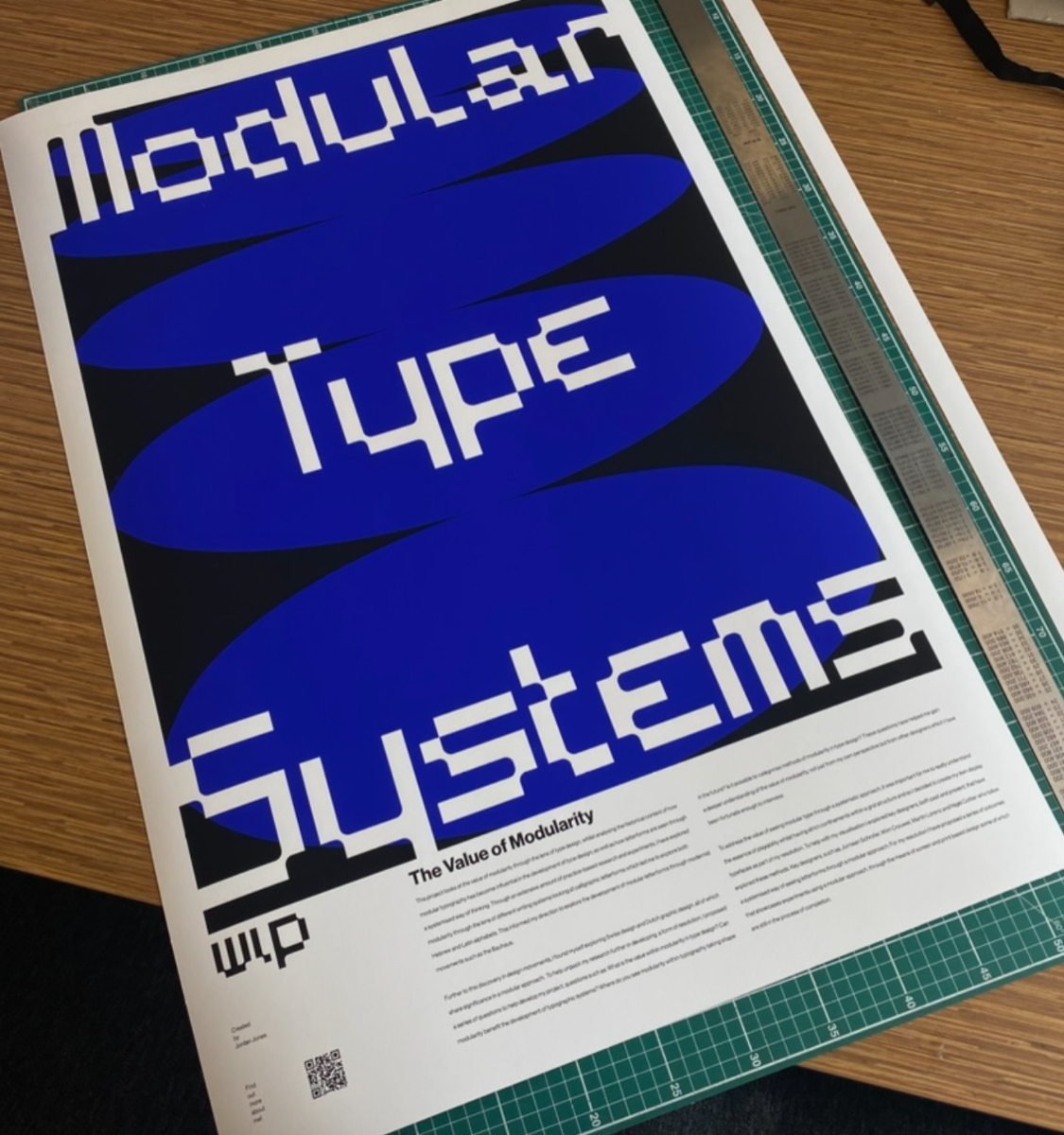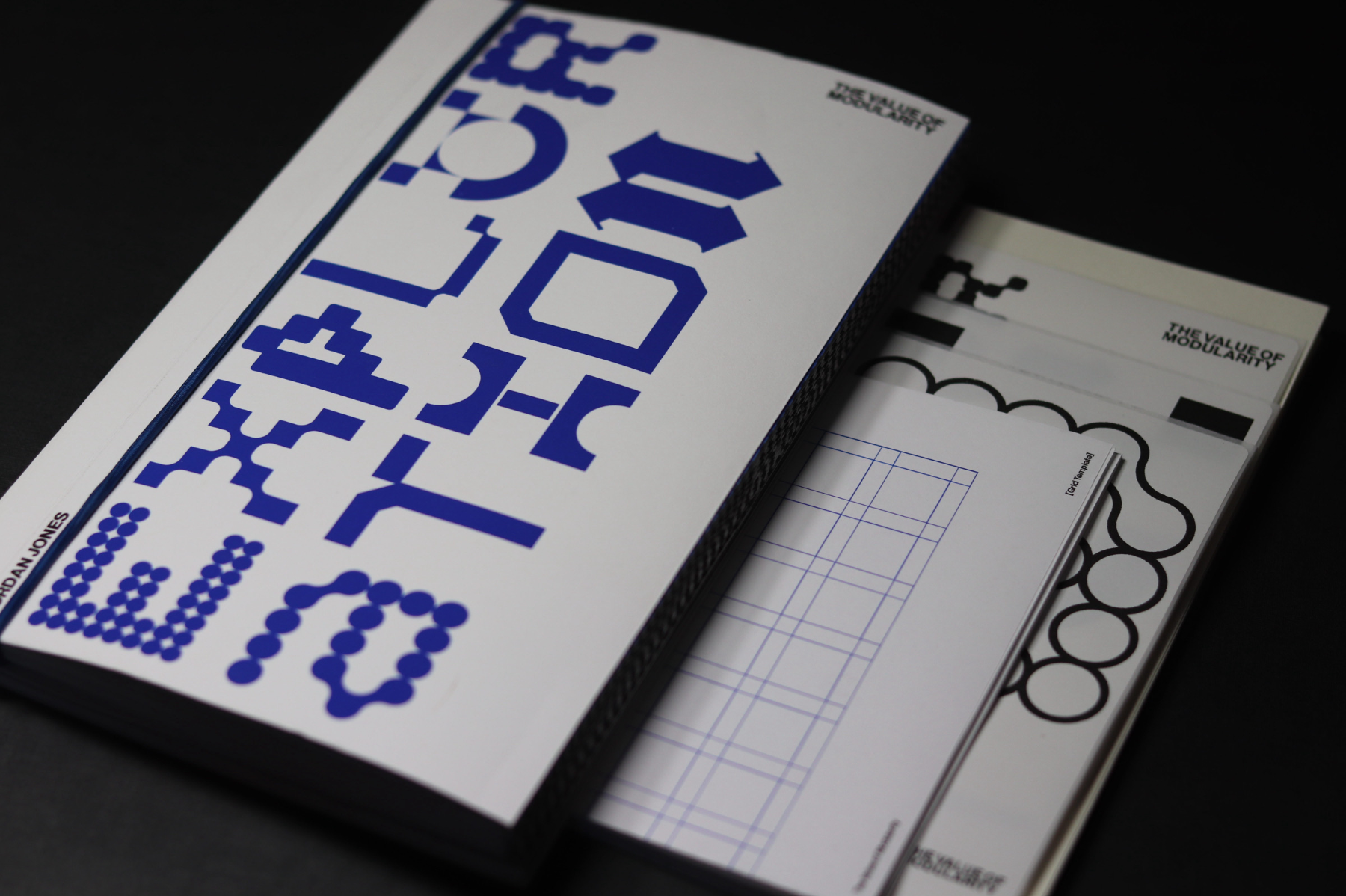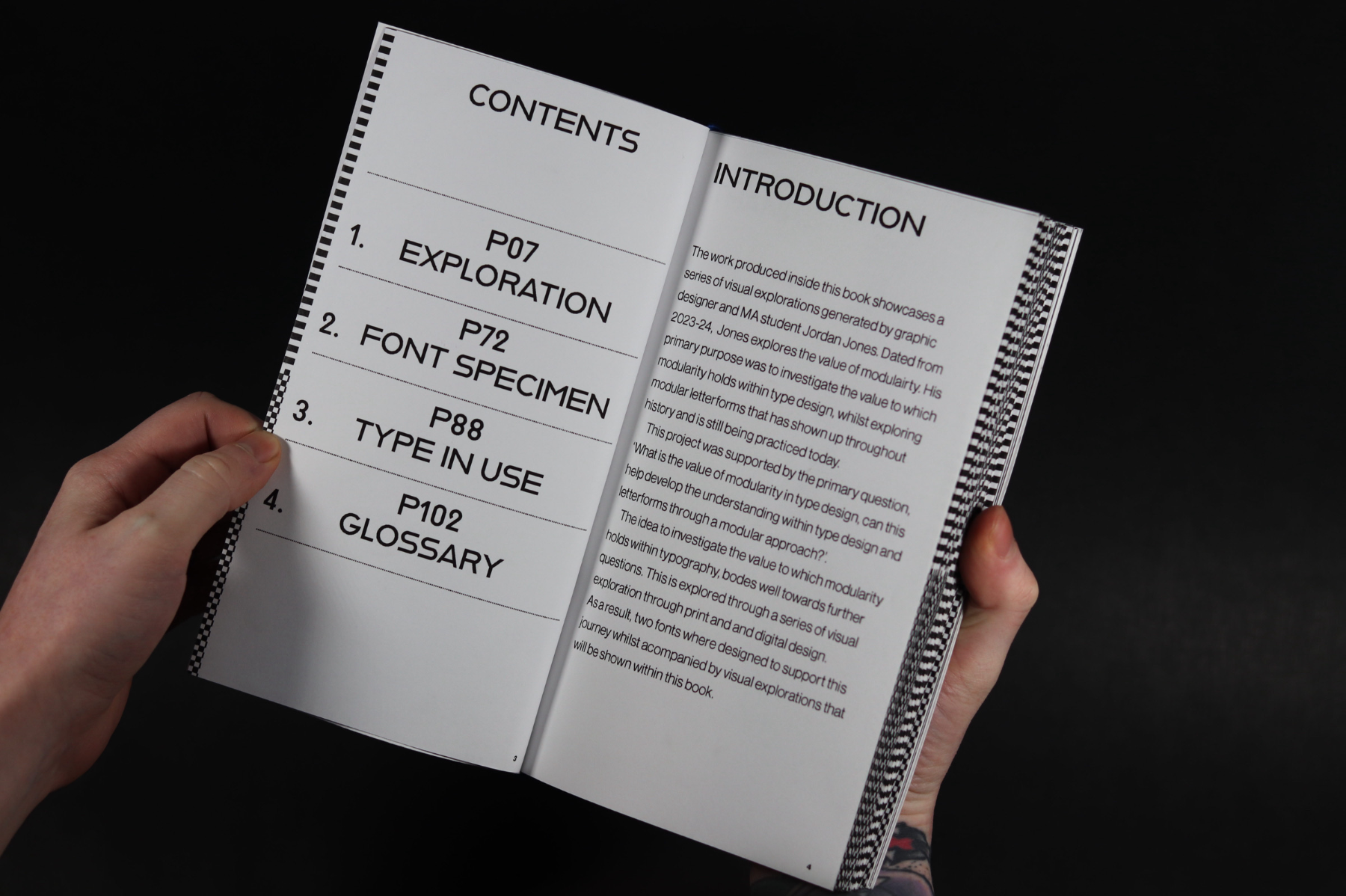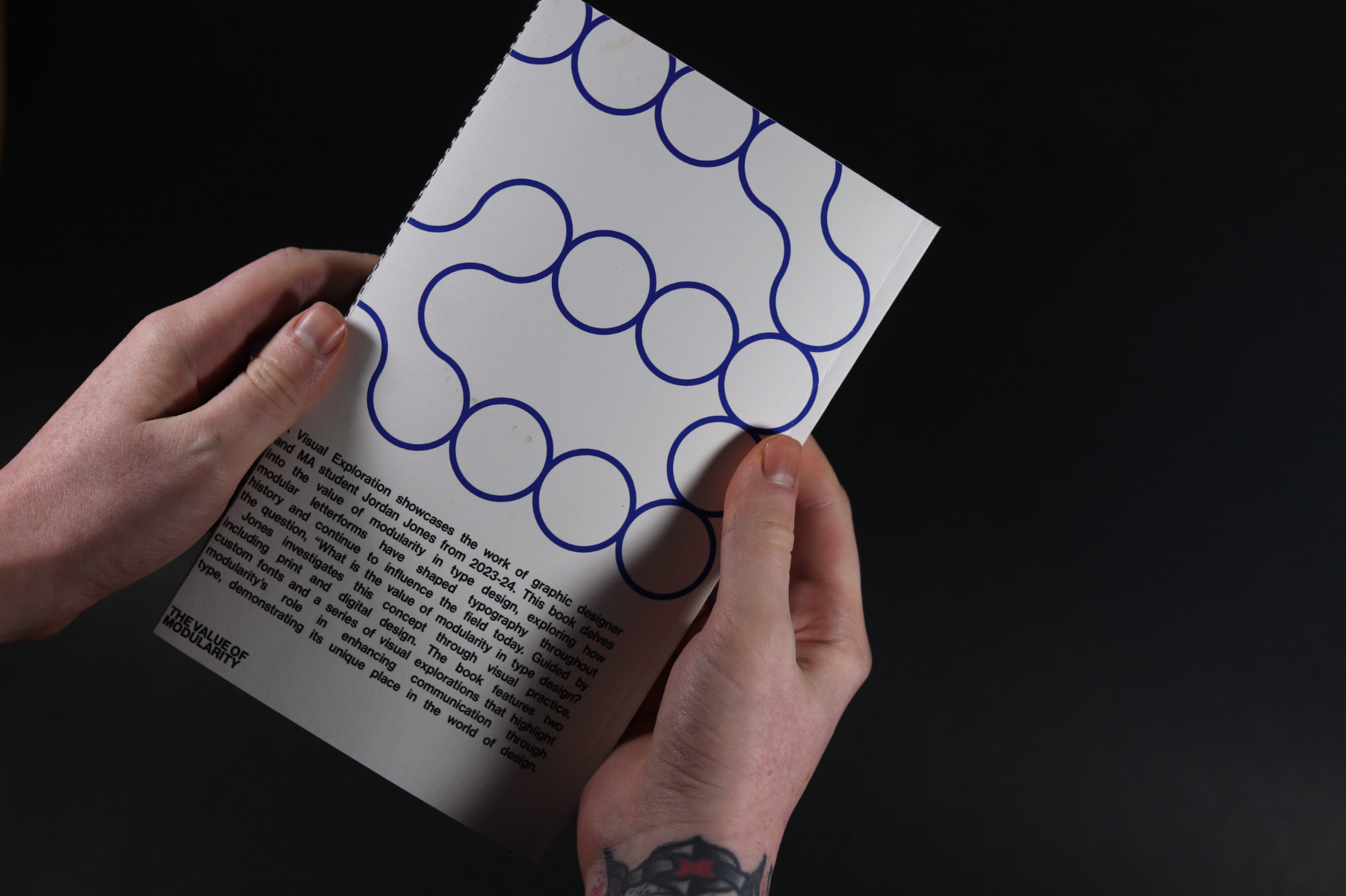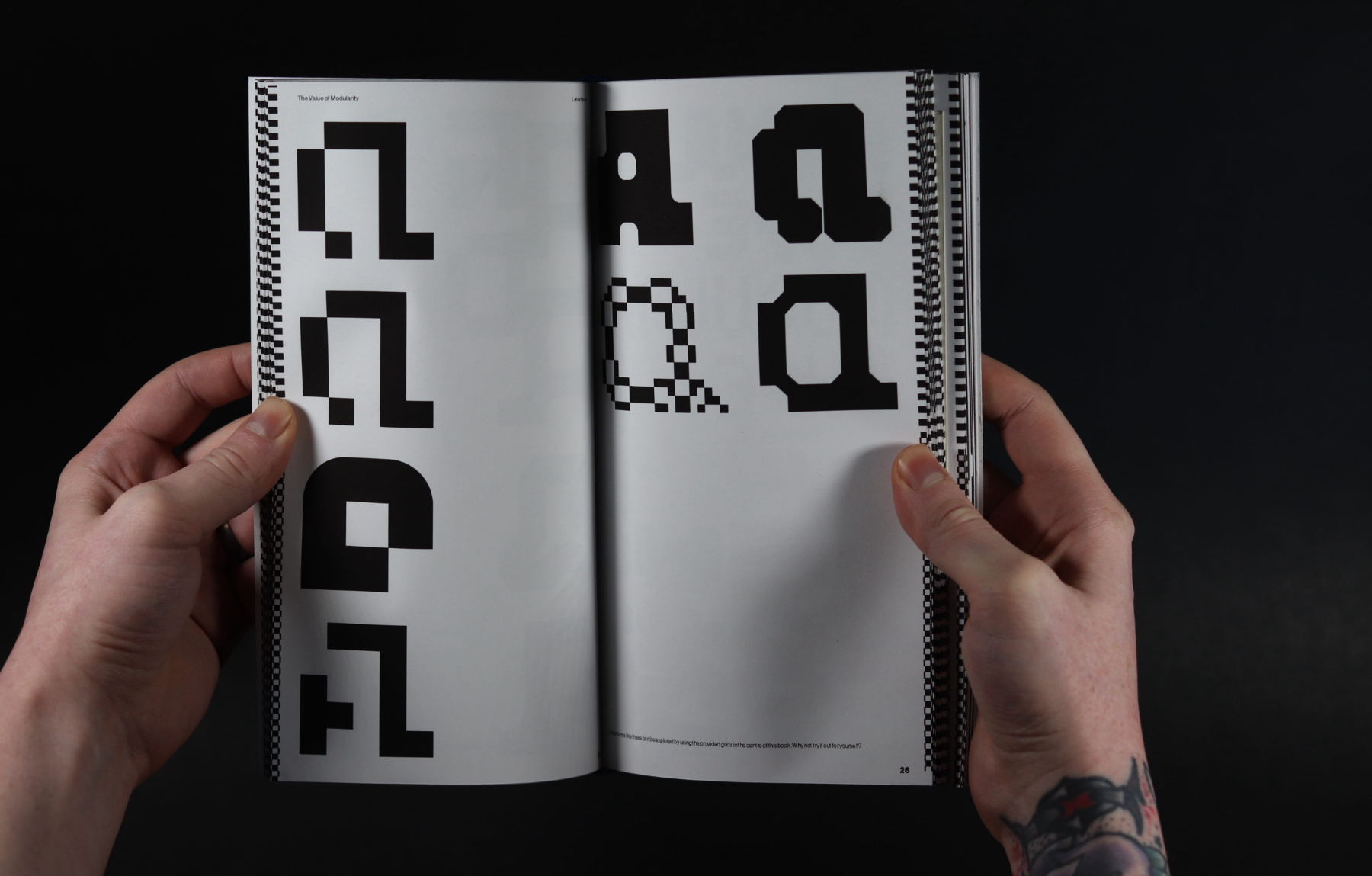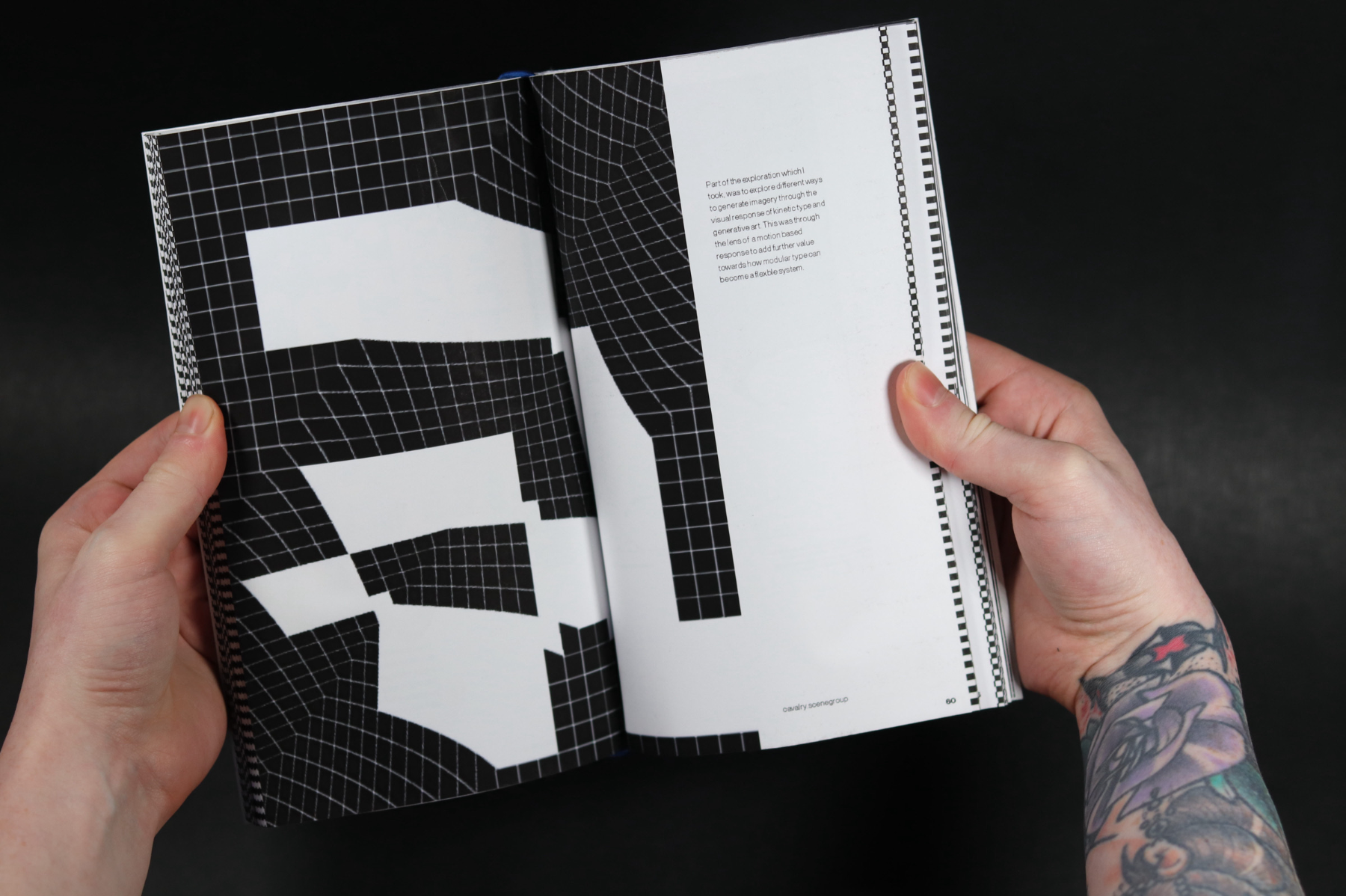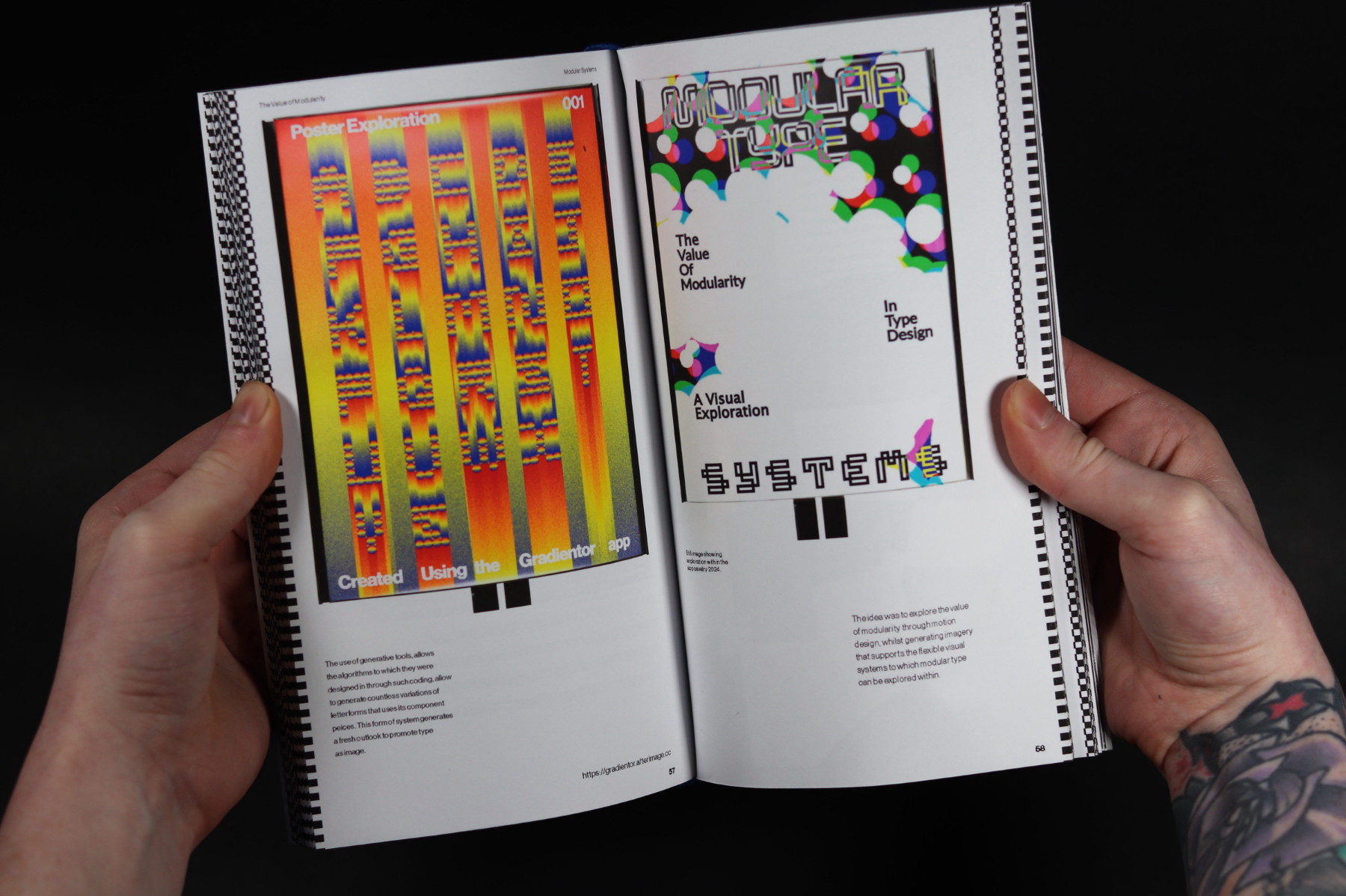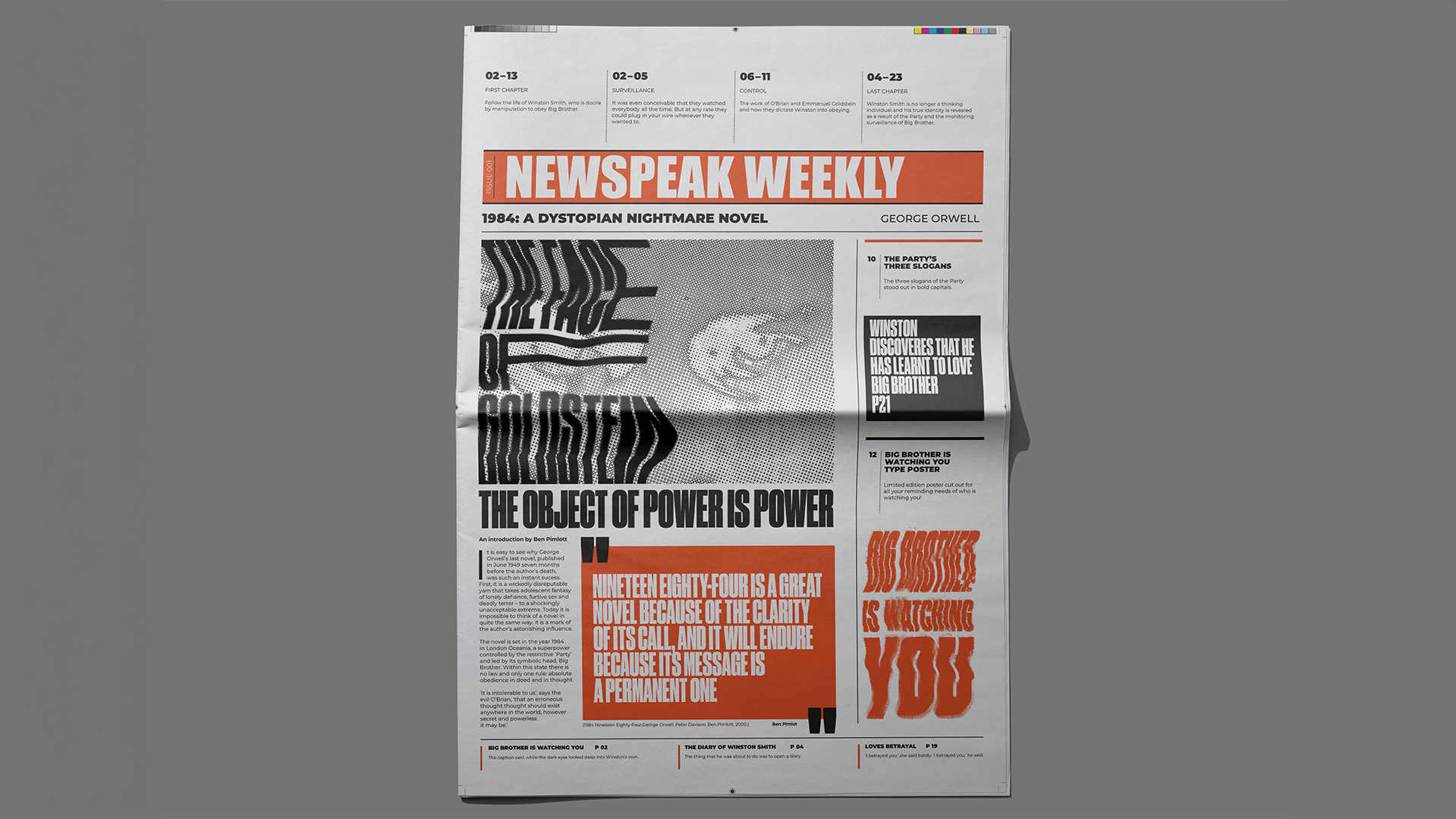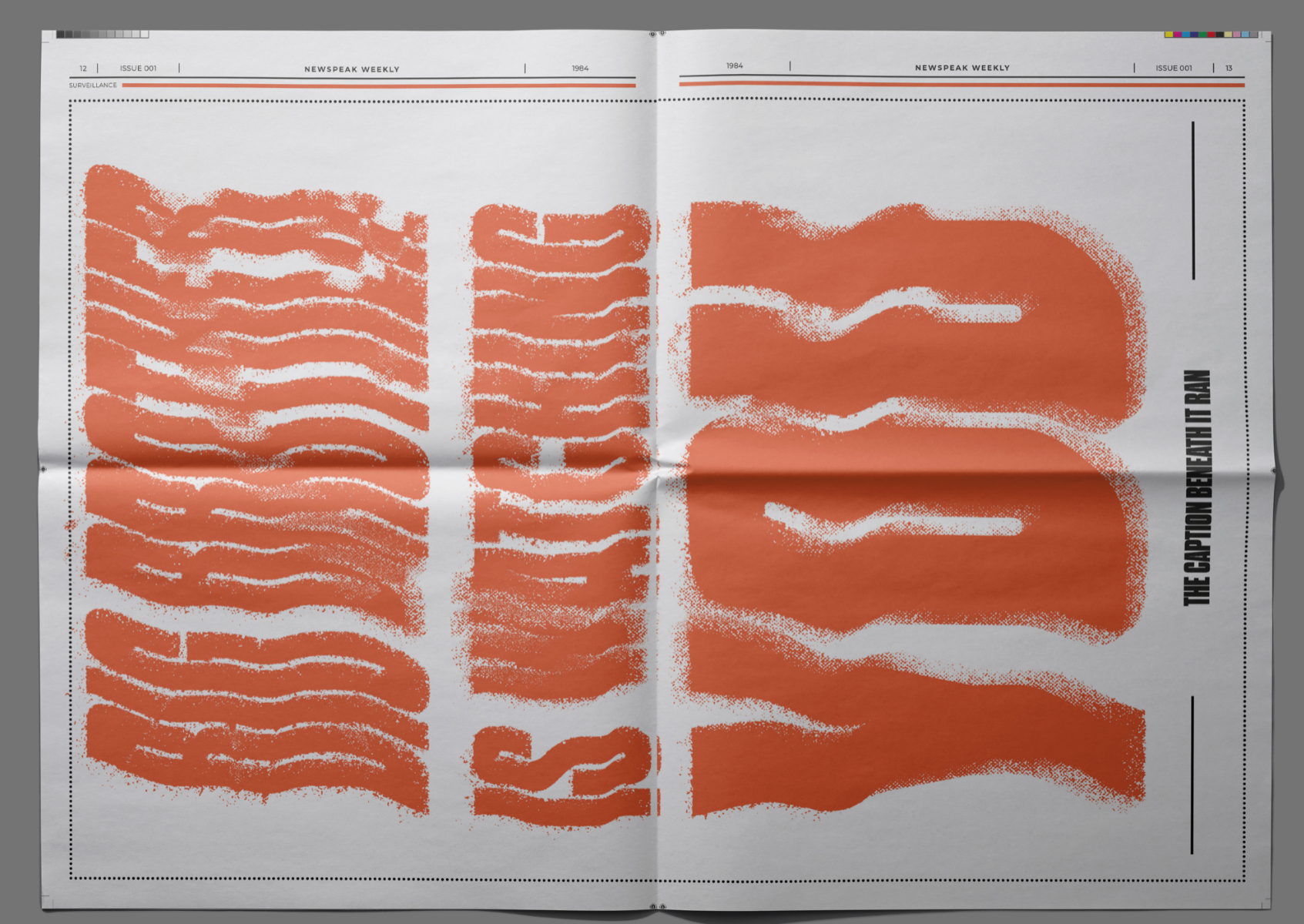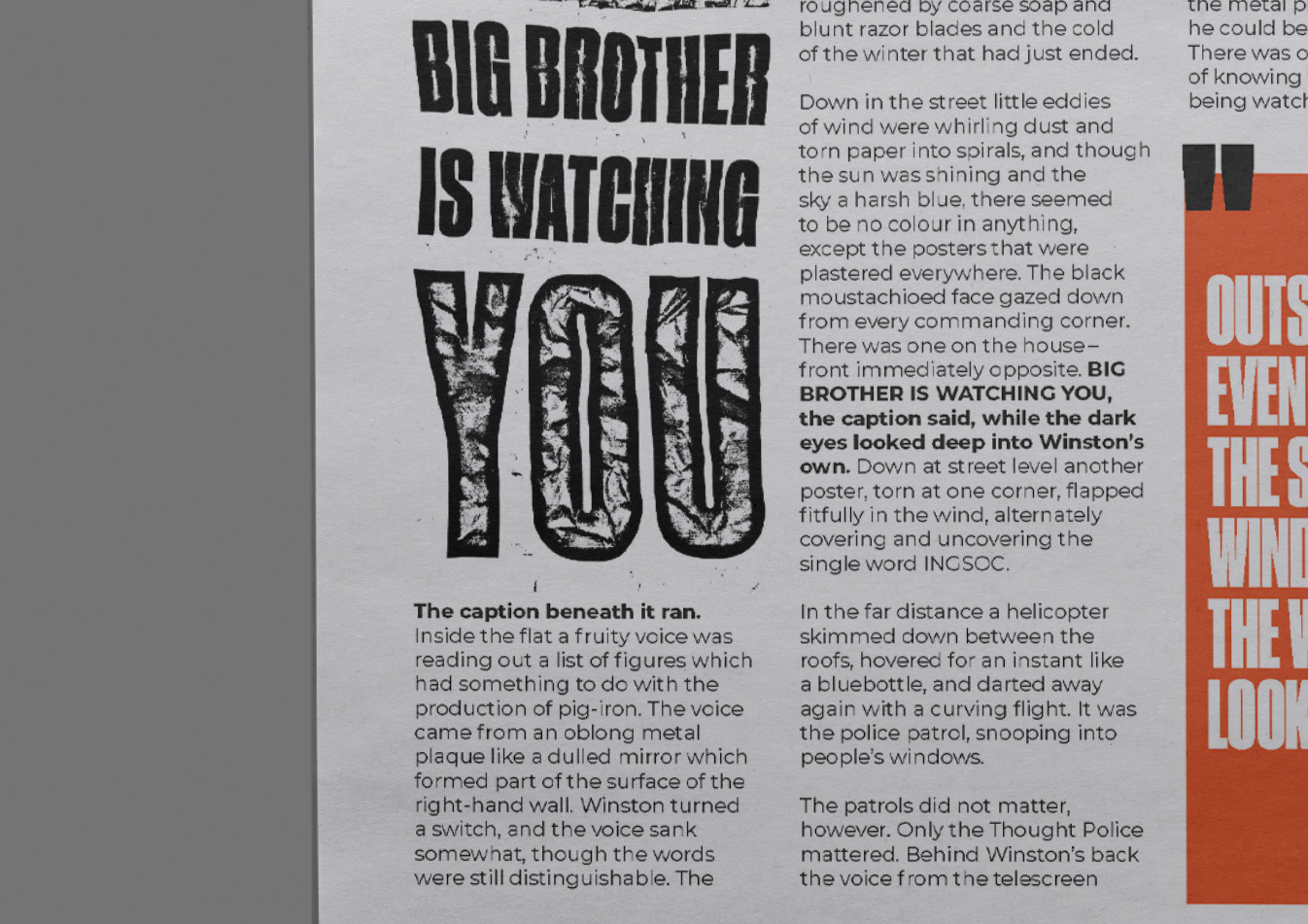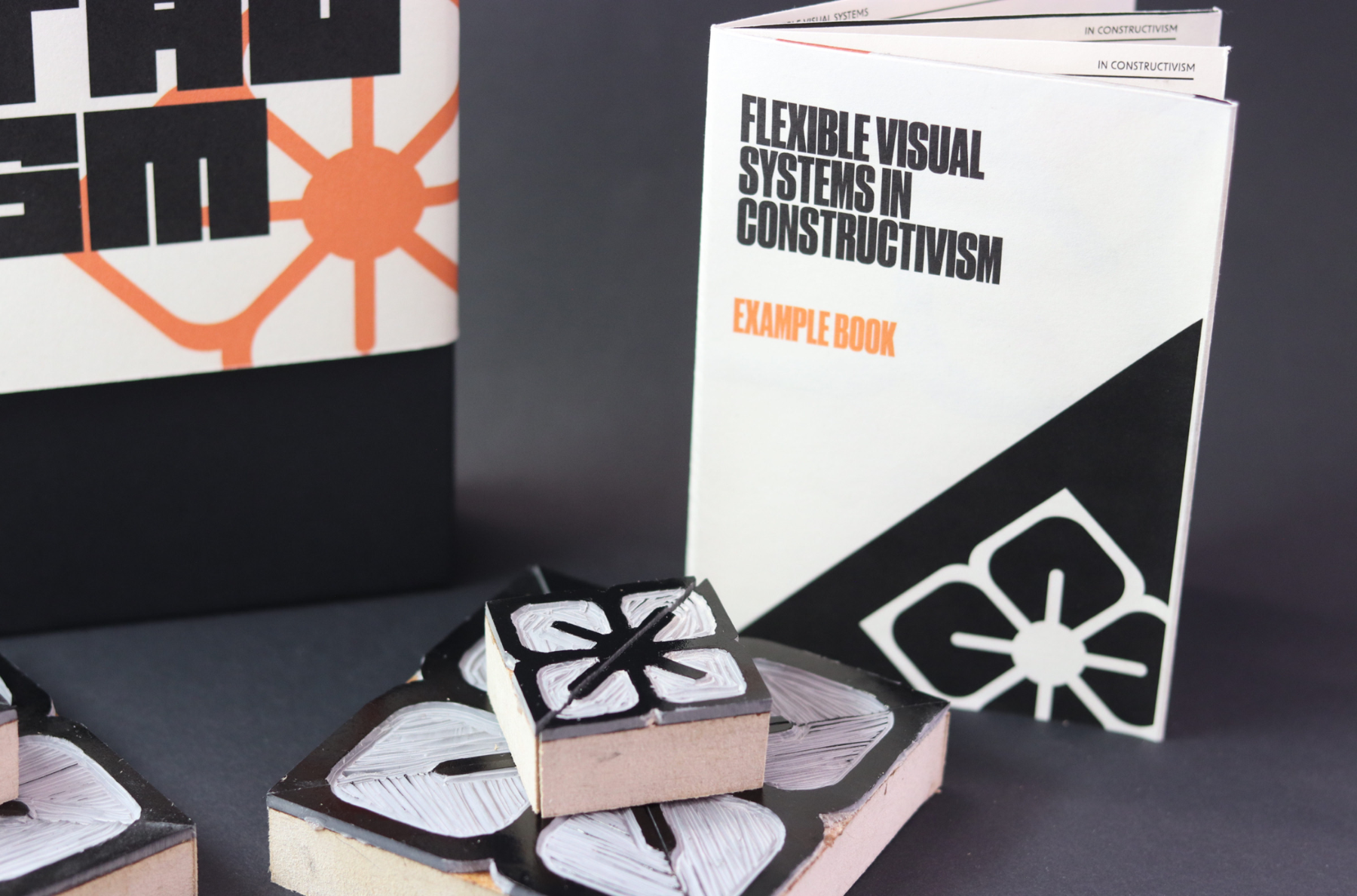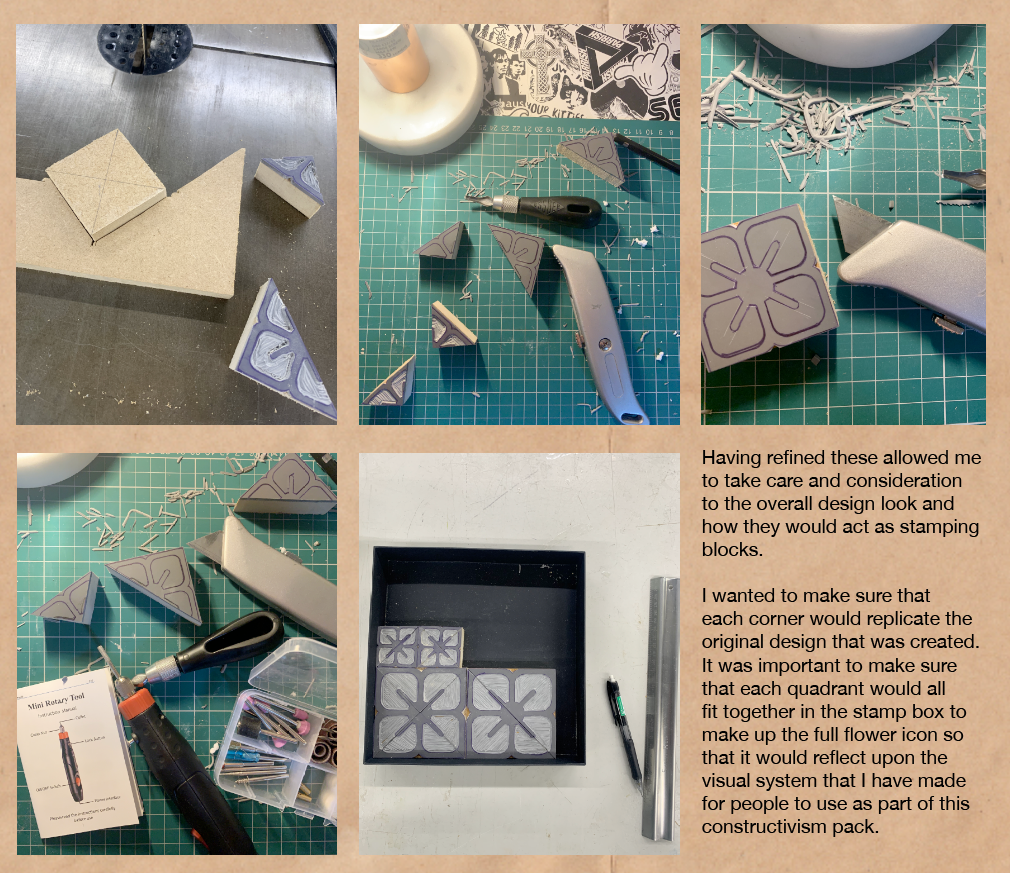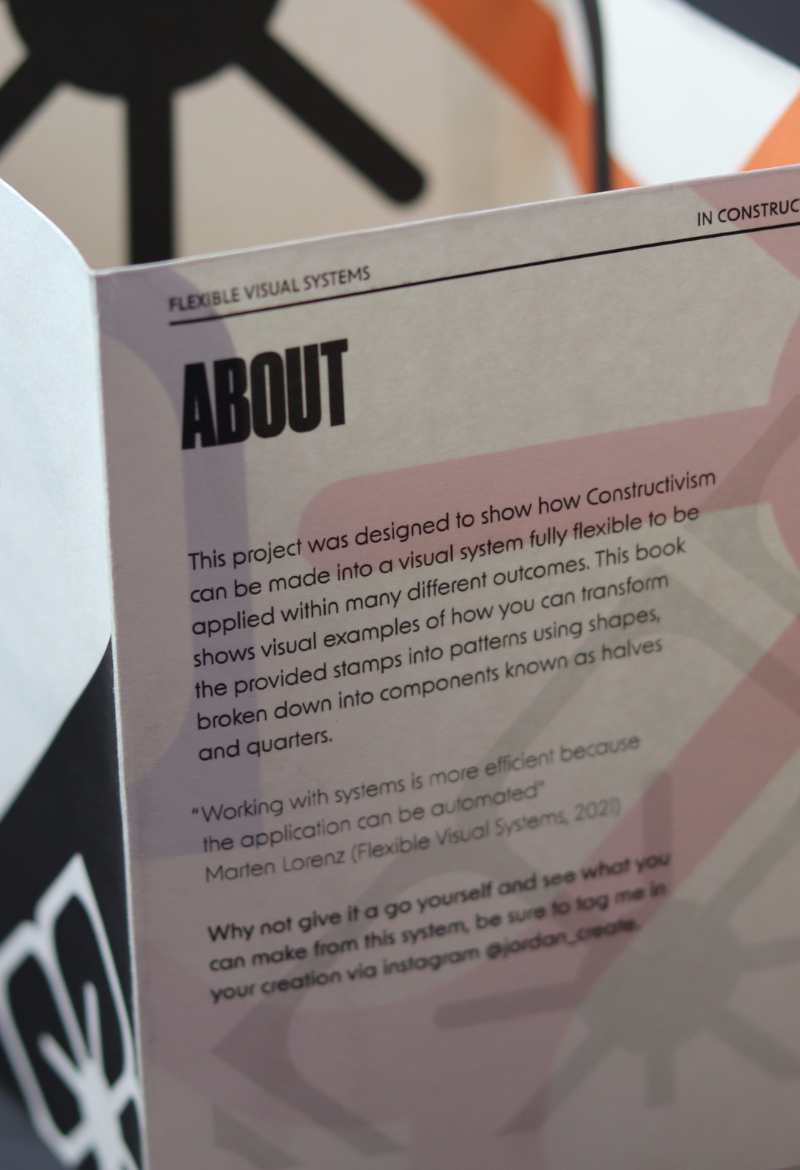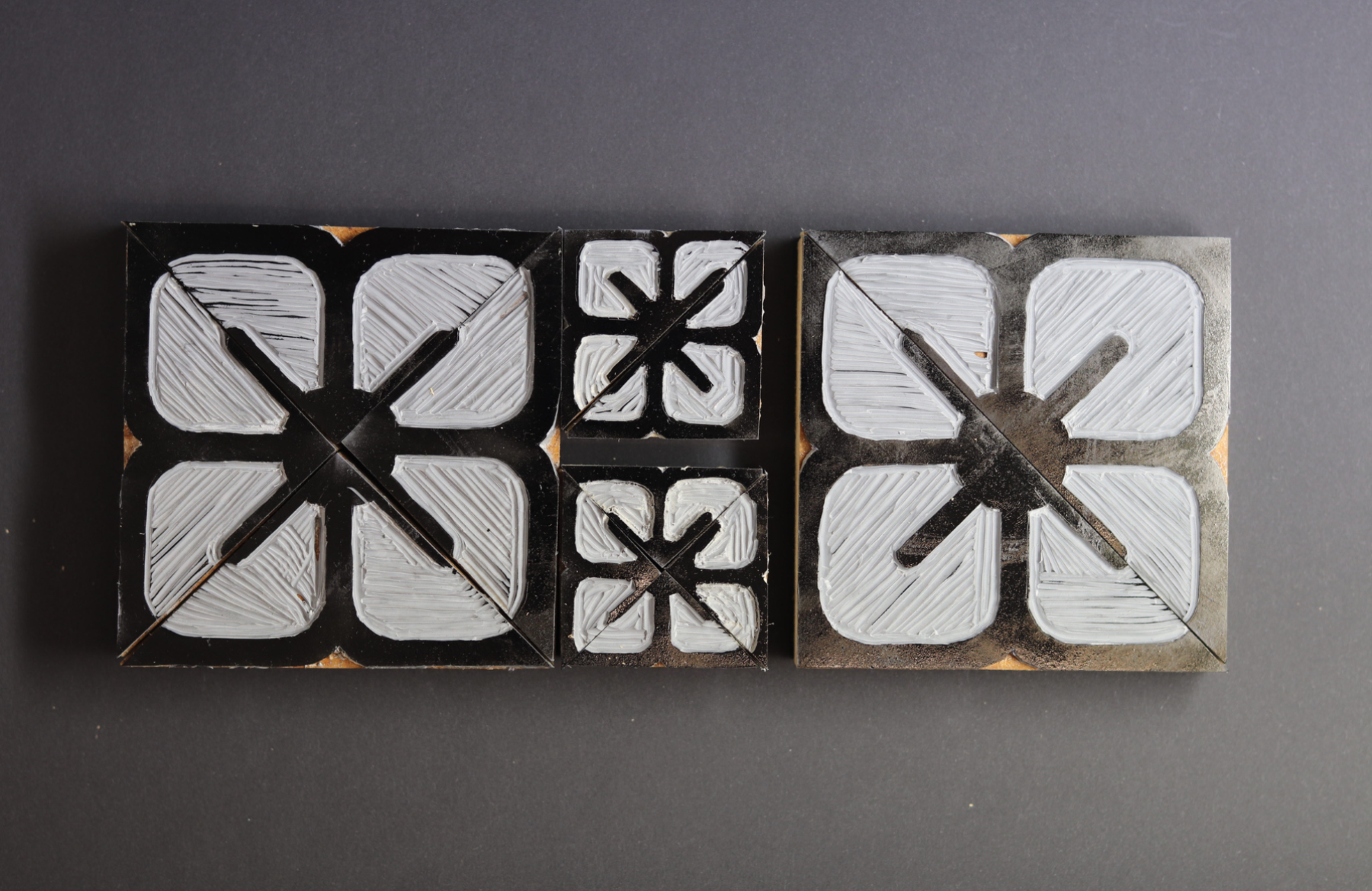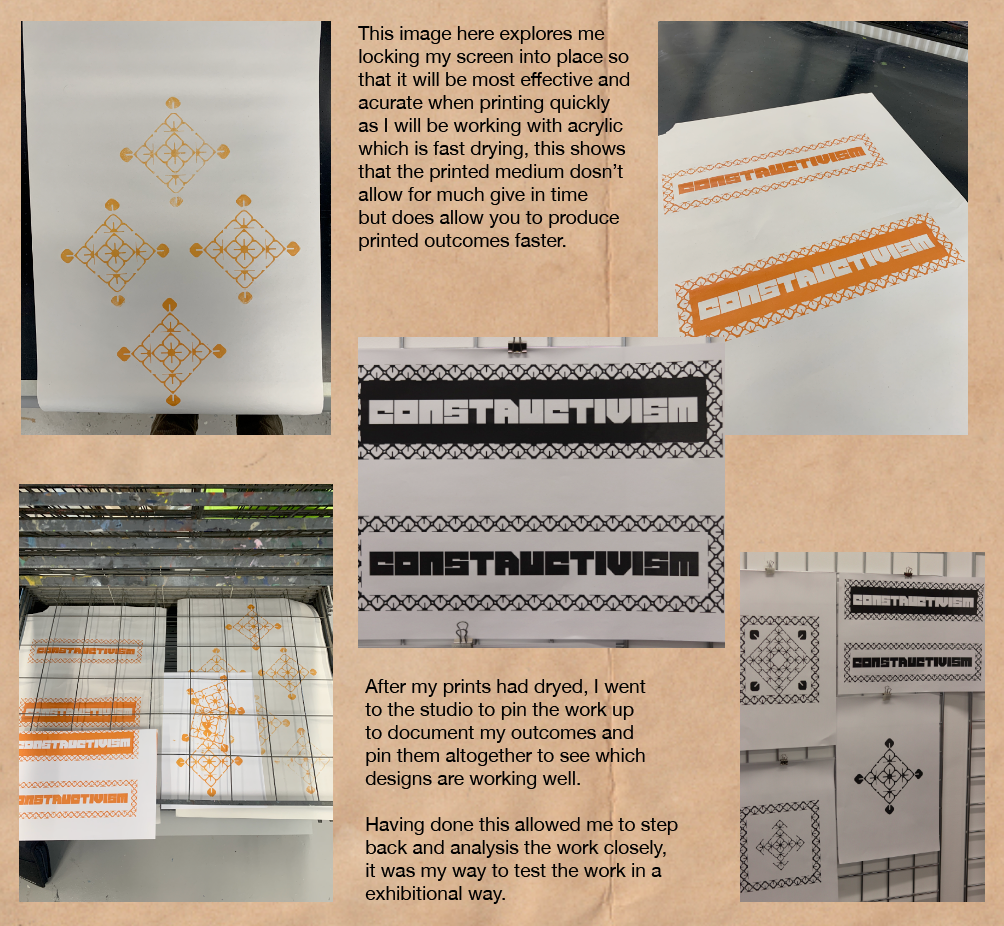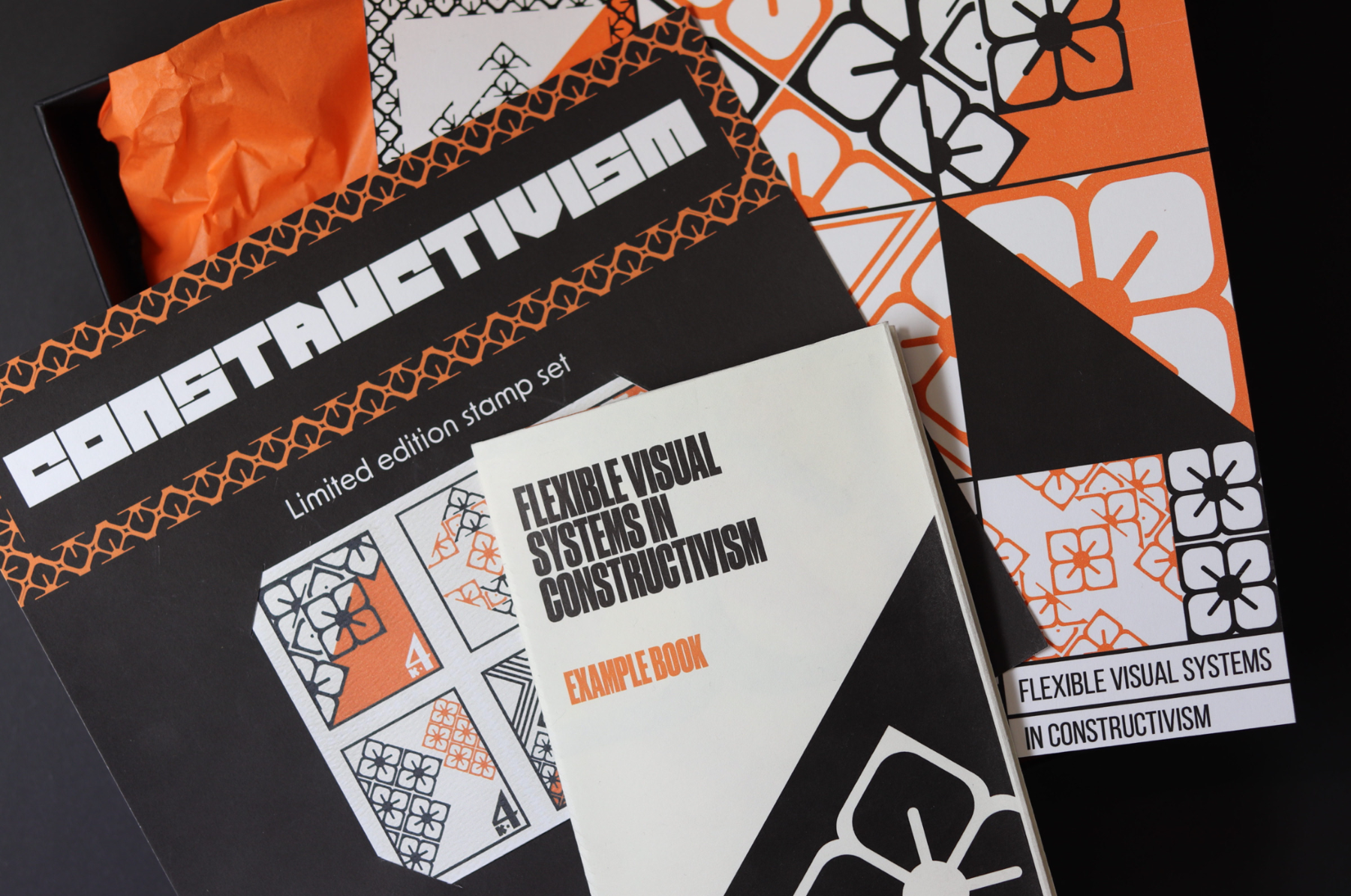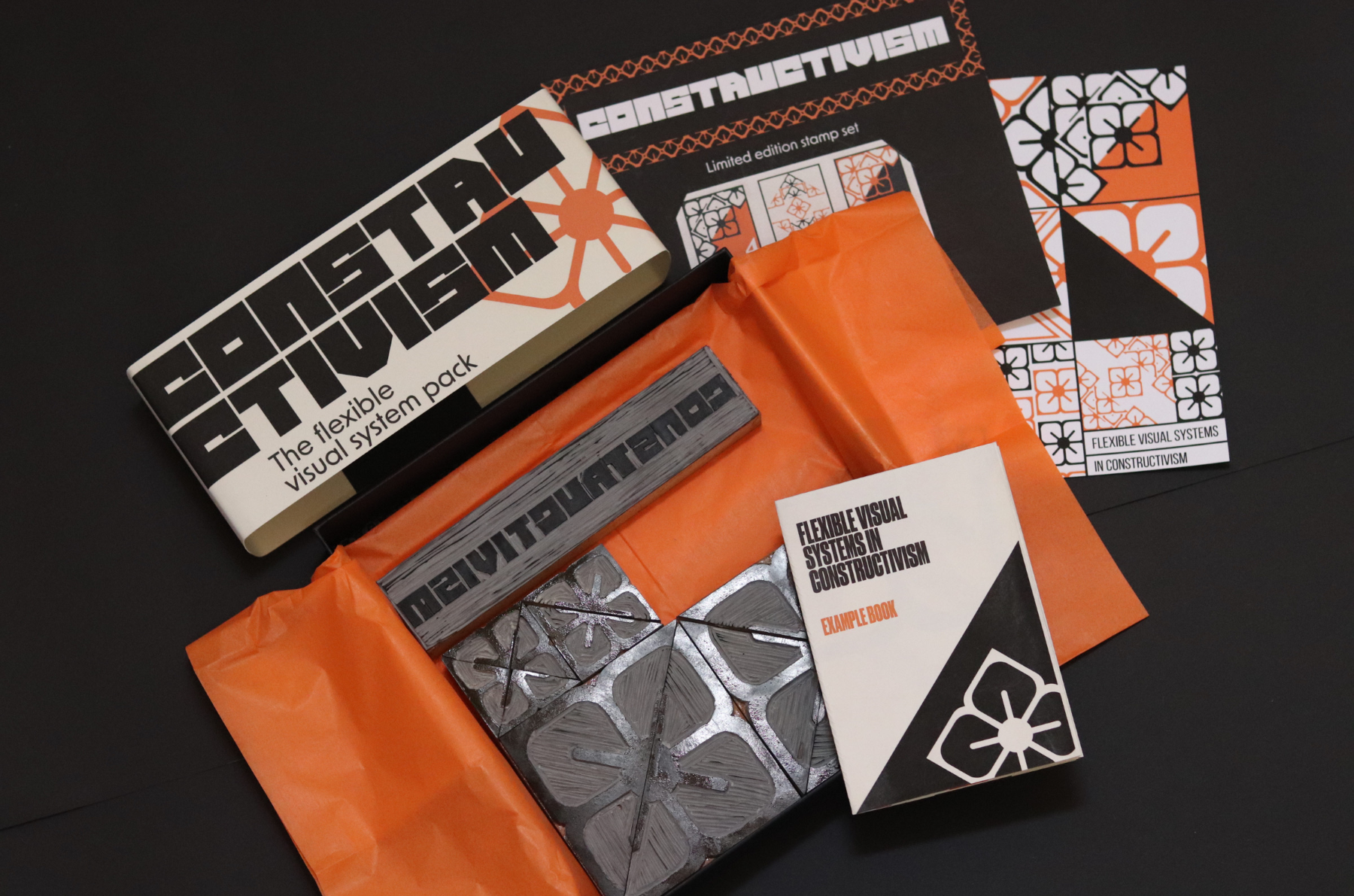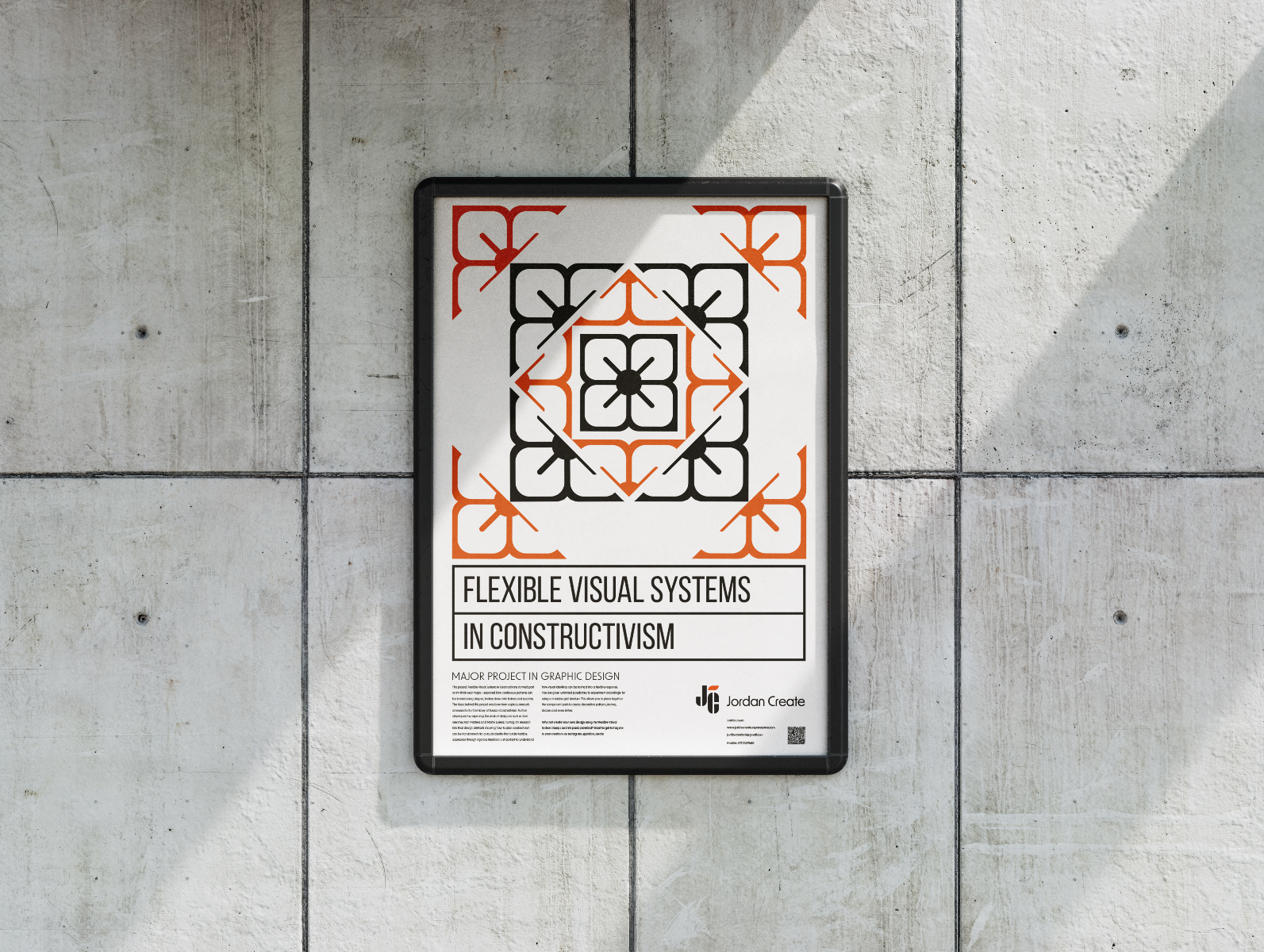Jordan Jones
Graphic Design MA
University of Portsmouth
Specialisms: Graphic Design / Typography / Digital Design
Location: Portsmouth, United Kingdom
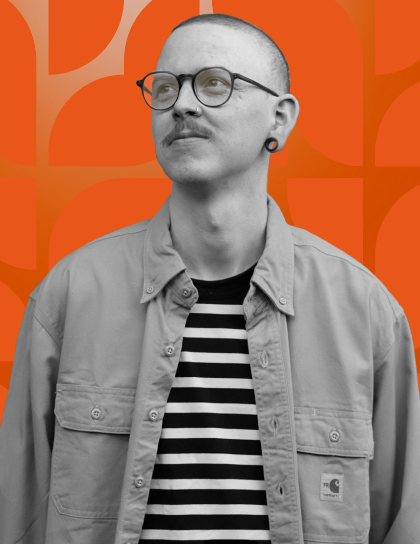
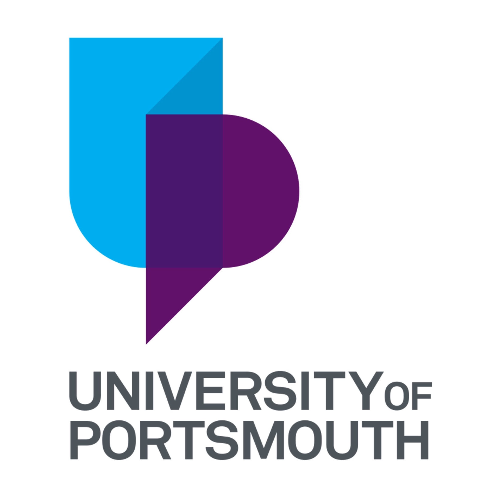
Jordan Jones

First Name: Jordan
Last Name: Jones
Specialisms: Graphic Design / Typography / Digital Design
Sectors:
My Location: Portsmouth, United Kingdom
University / College: University of Portsmouth
Course / Program Title: Graphic Design MA
About
Hi, I'm Jordan, a multi-disciplinary graphic designer with a passion for modernist design principles in typography, visual design and visual systems. With an MA and BA Honours degree in Graphic Design from the University of Portsmouth, my expertise in typography, type design, and visual systems promotes a strong foundation that I apply through my own methodology approach.
Through my education and freelance work, I’ve tackled diverse research & development briefs and client projects, sharpening my creative problem-solving skills and refining my approach to practice-based research. I believe in the power of design to communicate and connect, and this philosophy drives my methodology.
My portfolio showcases a blend of creativity and technical expertise, spanning brand identity, innovative typography, and engaging print design. Whether building a brand from the ground up or refining an existing one, I bring a thoughtful and well-rounded approach to every project.
Exploring print design, visual systems, and type design continues to expand my creative toolkit, allowing me to push boundaries and grow as a designer. I thrive on collaboration and feedback, always striving to improve and contribute fresh ideas with a strong design perspective.
This work was part of my major project for my Master’s studies in Graphic Design. This project looks at the value of modularity through the lens of type design and understanding modular letterforms. The project analyses the historical context of how modular typography has become influential in the development of type design, as well as how letterforms are seen through a systemised way of thinking.
OPEN|CLOSE: AN INTERNATIONAL SOCIETY OF TYPOGRAPHIC DESIGNERS (istd) brief
As part of my professional practice in my third year at University, I had to take on the briefs and competitions module for my course. This module asked me to problem-solve to a chosen brief of my choosing. I decided to select an ISTD brief called Open|Close. Using the opening and closing chapter of my chosen book, I had to create a radical reimagining of the contents through typography and so I decided to focus on the book 1984 by George Orwell. The idea was to reflect upon the shift in tone and atmosphere of the opening and closing chapters of the text using the type and composition. I then adapted this by refining my design to fit within my chosen medium. I chose the concept to design a newspaper that would fit inside the narrative of the story of the ideology of Newspeak that is enforced by The Party. Using the contents in the book, I then established a running theme of distortion that allowed me to develop into typographic imagery. For the final resolution, I used distortion as a theme to direct my rationale through typographic imagery. I produced a broadsheet newspaper as this reflects upon my design rationale in radically reimagining the story of 1984 to meet a wider audience and support the narrative of Newspeak in the modern day, this also will encourage new readers to become aware of the work of George Orwell’s novel 1984.
Competitions
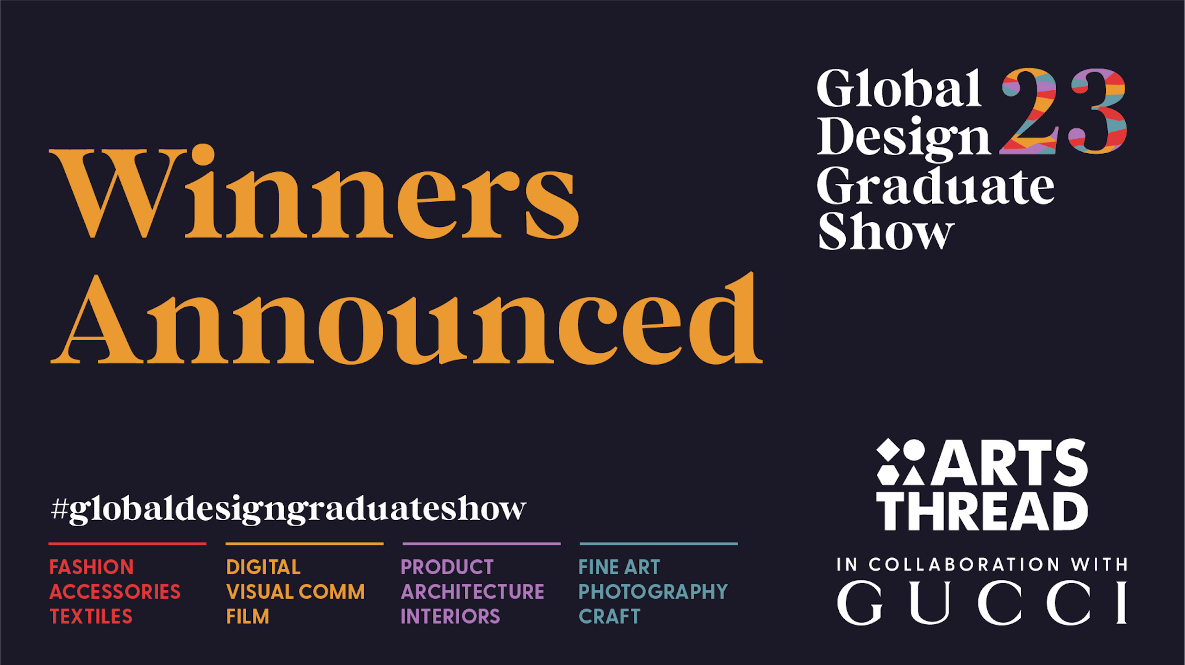
Global Design Graduate Show 2023
My project called Flexible Visual Systems in Constructivism, formed part of my third-year major. The brief for this project was to explore an area of interest that would evidence a wide range of secondary textual and visual research through a wide selection of credible sources. Copious amounts of research into the history of Russian Constructivism, allowed me to adopt a constructivist mindset to explore layout and composition through grid systems in modularity and how this is communicated in graphic design. My research lead me to further develop ideas by exploring the work of designers such as Karl Gerstner, Karl Martens and Martin Lorenz; turning my research into final design artefacts that visually show how Russian constructivism can be transformed into a visual identity that is fully flexible as a visual system. Expression through rigorous iterations became an important part of my understanding of how visual identities can be formed into a flexible response. Using different print medium methods through screen printing and lino print, allowed me to adapt my ideas further visually and show how I can create such artefacts that will best communicate towards my target audience.
Competitions

